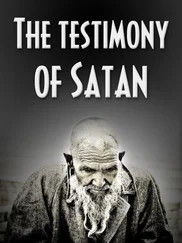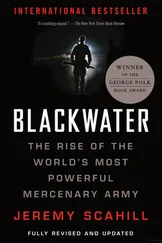But Indha Adde had watched the CIA-backed warlord alliance in action and wanted nothing to do with it. As he saw it, they were killing Somalis in the service of a foreign power. “They were contracted to hunt down anyone who was wanted by the Americans. Their prisoners were all mistreated—they were stripped naked and had their mouths taped,” he remembered. “The warlords would kill the prisoners who the Americans released, to keep them from talking about their imprisonment.”
Moreover, Indha Adde was in the midst of a personal conversion from a heavy-drinking gangster to what he saw as a real Muslim. When the United States invaded Iraq in 2003, Indha Adde—like many Muslims around the globe—viewed the United States as “arrogant” and on a crusade against Islam. “The US president’s words against Islam, the Iraq invasion and the Afghanistan war inspired me personally not to cooperate with the CIA,” he recalled. “I refused all of their offers.” Instead, Indha Adde made a decision to commit his forces to defeating the CIA’s warlords. “The Bush administration overstated the strength of Al Qaeda and Osama [Bin Laden]. But when he invaded Iraq, we all thought that Islam was under attack. That was al Qaeda’s biggest victory, and that is why we supported them.”
When al Qaeda figures would seek his support or sanctuary in the areas he controlled, Indha Adde obliged. To him, the men were on the right side of history, fighting crusaders and their proxy warlords and defending Islam. “Personally, I thought of even Osama himself as a good man who only wanted the implementation of Islamic law,” he remembered. “If there was accountability, Bush would have been executed like Saddam Hussein. But no one is powerful enough to hold the US to account.”
While Qanyare worked with the Americans, Indha Adde soon became one of al Qaeda’s key paramilitary allies and a commander of one of the most powerful Islamic factions to rise up in Somalia after 9/11. American activities that had started with a discreet meeting with Qanyare in a Nairobi hotel room in 2002 with the aim of killing or capturing five specific terrorists had transformed into death squads roaming Somalia, killing with impunity and widely viewed as being directly supported and encouraged by the United States. In a meeting with US officials in early 2006, according to a diplomatic cable, the internationally recognized Somali president “wondered aloud why the U.S. would want to start an open war in Mogadishu.”
It was this horrific era that gave birth to the Islamic Courts Union (ICU), which would rise up against the US-backed proxies. The ICU was not a plot organized by al Qaeda, but rather an indigenous response to the lawlessness and brutality of the warlords, particularly those backed by the CIA. As Somalia disintegrated, small, regional Islamic courts began rising up. They created local justice systems based on Sharia law and sought to bring some level of stability. For several years, the courts were largely autonomous, clan-based entities. In 2004, the twelve courts united to become the Supreme Council of Islamic Courts of Somalia, known as “the Courts.” Sheikh Sharif Sheikh Ahmed (known simply as Sheikh Sharif), a former schoolteacher and cleric from the Middle Shabelle region, was elected its leader. Indha Adde would eventually serve as its defense minister. “When the Islamic Courts Union formed, there was a civil war in Somalia. There was murder, robbery and rape. The powerless were victimized. Everyone suffered, but the weakest clans were the hardest hit,” recalled Indha Adde. “Warlords ruled, and we searched for a way to unite and save our people. It is Islam that unites us, so we formed the Islamic Courts Union.”
In 2005, foreign weapons and money poured into Somalia. Indha Adde and other Courts figures began receiving shipments of heavy weapons and ammunition, flown into private airstrips from Eritrea. Ethiopia, meanwhile, joined with the United States in supporting the CIA’s warlords with finances, weapons and ammunition. Somalia’s prime minister, Ali Mohamed Gedi, an Italian-educated veterinarian, watched as the CIA bankrolled and armed Qanyare and the other warlords, some of whom were actually ministers in his own government. “I was following very closely those warlords and particularly Qanyare, who was misleading the US intelligence organizations by saying, ‘I can defeat this terrorist, this Islamist. Yes, I will catch them tomorrow, the next day.’ And they were paying him,” Gedi told me. The CIA, he charged, undermined his government and “encouraged the mushrooming of the Islamic Courts and their strength. [The United States] stimulated the Islamic Courts people by supporting the warlords and the ‘antiterrorism group’ at that time. So the whole mess started from that point.”
In February 2006, as the Islamic Courts Union grew in strength, Qanyare and the CIA’s warlord network went public, officially announcing the Alliance for the Restoration of Peace and Counterterrorism and calling on Somalis to join them in defeating the “jihadists.” In March, at the White House, the National Security Council officially endorsed the US campaign to fund and support the warlords. State Department spokesman Sean Mc-Cormack said the US strategy was to “work with responsible individuals… in fighting terror. It’s a real concern of ours—terror taking root in the Horn of Africa. We don’t want to see another safe haven for terrorists created. Our interest is purely in seeing Somalia achieve a better day.” Washington “chose to view the situation only through the prism of its ‘war on terror,’” observed Salim Lone, a former UN official. “The Bush Administration supported the warlords—in violation of a UN arms embargo it helped impose on Somalia many years ago—indirectly funneling them arms and suitcases filled with dollars.” Qanyare and his allies suddenly appeared far better armed than before. “To war with [al Qaeda], you need very well-trained forces. And enough numbers, and enough weapons, and enough logistics. And enough reinforcements,” Qanyare told me. With no sense of the irony that his alliance had given rise to the ICU, Qanyare told his American handlers, “This war is easy, it will not take time.” It would not even take six months, he predicted. He was right about the timeline, but not its outcome.
After the warlords openly declared war on the Islamic Courts, Mogadishu was rocked by its worst fighting in more than a decade. By May, the Washington Post was reporting battles that “were some of the most violent in Mogadishu since the end of the American intervention in 1994, and left 150 dead and hundreds more wounded.” The UN Monitoring Group, in its report to the Security Council, cited “clandestine third-country” support for the warlords. It did not specify which country, but everyone knew. US diplomats in the region soon found themselves besieged by their colleagues from other nations, including European Union officials. According to one US cable from the Nairobi Embassy, some European governments, “having concluded that the U.S. is supporting individual warlords as a means to prosecute the GWOT, tell us they are concerned that such actions now may set back both CT and democratization objectives in Somalia.” The EU, the cable noted, was preparing to release a report that would state bluntly: “There are worrying signs that the general population—riled by overt support of the United States for the warlords—is increasingly rallying to the cause of the jihadis.” Some US officials were clearly irked by the CIA’s warlord program. They privately told the New York Times that “the campaign has thwarted counterterrorism efforts inside Somalia and empowered the same Islamic groups it was intended to marginalize.”
The once disparate Islamic Courts Union, at the urging of and with strong backing from local businessmen in Mogadishu and other cities, began a concerted mobilization to defeat the CIA’s warlords. Indha Adde would lead its military campaign. The ICU called on Somalis to “join the jihad against the enemies of Somalia.”
Читать дальше












